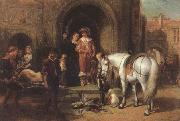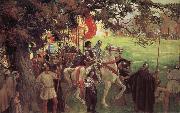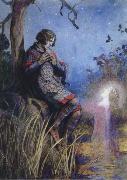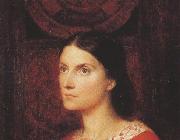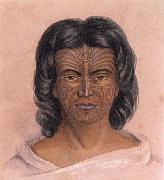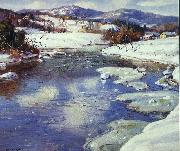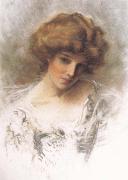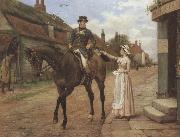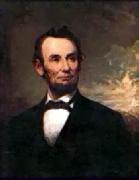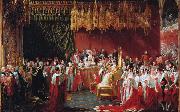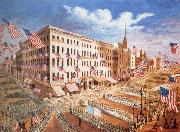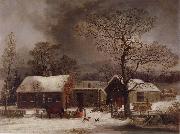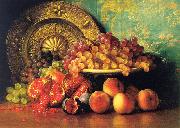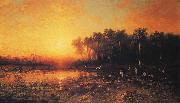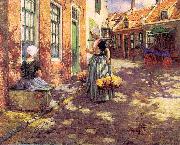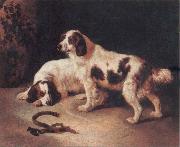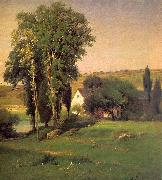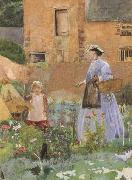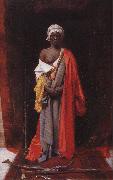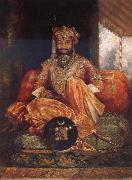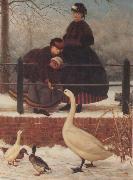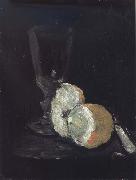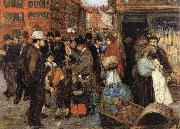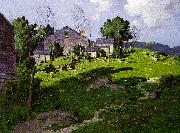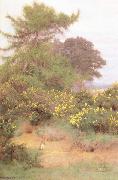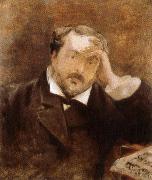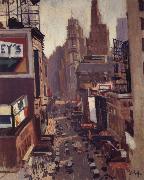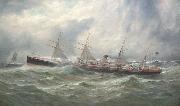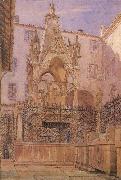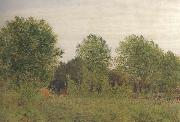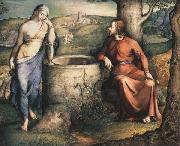|
|
 |
George Desmarees
|
|
was born in 1697 at Stockholm, where he was instructed in painting by Peter Martin van Meytens, whose assistant he afterwards became. In 1724 he made a stay in Amsterdam, and in the following year in Nuremberg and then in Venice, where he received further tuition from Piazzetta. In 1731 he settled in Munich, where he became court painter, and where he continued to reside till his death in 1776. A portrait of himself and one of his daughter are, with a third in the Munich Gallery, and other portraits by him are at Augsburg.
|
|
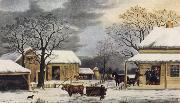 |
George Durrie
|
|
Landscape painter, Portrait Painter .
American , 1820-1863 |
|
|
|
 |
George Earle
|
|
English , born May 25, 1803, London, Eng. -died Jan. 18, 1873, Torquay, Devonshire |
|
|
|
|
|
|
|
|
|
|
|
|
|
|
|
|
|
|
|
|
|
|
|
|
|
 |
george gower
|
|
(born c. 1540 - died London 1596) was an English portrait painter who became Serjeant Painter to Queen Elizabeth I in 1581.
|
|
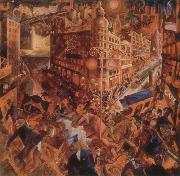 |
george grosz
|
|
george grosz(1893 to 1959),German painter, draughtsman and illustrator. He is particularly valued for his caustic caricatures, in which he used the reed pen with notable success. Although his paintings are not quite as significant as his graphic art, a number of them are, nonetheless, major works. He grew up in the provincial town of Stolp, Pomerania (now Slupsk, Poland), where he attended the Oberrealschule, until he was expelled for disobedience. From 1909 to 1911 he attended the Akademie der K?nste in Dresden, where he met Kurt G?nther, Bernhard Kretschmar (1889-1972) and Franz Lenk (b 1898). Under his teacher Richard M?ller (1874-1954), Grosz painted and drew from plaster casts. At this time he was unaware of such avant-garde movements as Die Br?cke, also active in Dresden. In 1912 he studied with Emil Orlik at the Kunstgewerbeschule in Berlin. A year later he moved to the Acad?mie Colarossi in Paris, where he learnt a free drawing style that swiftly reached the essence of a motif. |
|
|
|
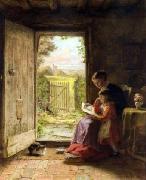 |
George Hardy
|
|
(1822-1909) was an English genre painter, a member of the Cranbrook Colony and eldest brother to Frederick Daniel Hardy.
Hardy was born in Brighton in Sussex the first son (of 8 children) of George Hardy (b. 1796 in London), a musician to George IV, Queen Adelaide, and Queen Victoria in the Royal household at Windsor. His mother was Sarah Lloyd (b. 1804).
Hardy became an oil painter of light-hearted genre subjects and moved to the artists' colony in Cranbrook in Kent. He married Ellen Hutton in May 1862 and the couple had 3 children.
Hardy died in Eastbourne in 1909.
|
|
|
|
|
|
|
|
|
|
|
|
|
|
|
|
|
|
|
|
|
|
|
|
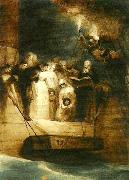 |
george jones
|
|
George Glenn Jones (born September 12, 1931) is an American country music singer known for his long list of hit records, his distinctive voice and phrasing, and his marriage to Tammy Wynette.
Over the past 20 years, Jones has frequently been referred to as "the greatest living country singer." Country music scholar Bill C. Malone writes, "For the two or three minutes consumed by a song, Jones immerses himself so completely in its lyrics, and in the mood it conveys, that the listener can scarcely avoid becoming similarly involved."
Throughout his long career, Jones made headlines often as much for tales of his drinking, stormy relationships with women, and violent rages as for his prolific career of making records and touring. His wild lifestyle led to Jones missing many performances, earning him the nickname "No Show Jones." With the help of his fourth wife, Nancy, he has been sober for many years. Jones has had more than 150 hits during his career, both as a solo artist and in duets with other artists. The shape of his nose and facial features have given Jones the nickname "The Possum." Jones said in an interview that he has chosen to tour only about 60 dates a year. |
|
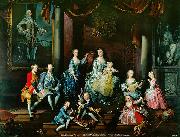 |
George Knapton
|
|
George Knapton (1698-1778) was an English portrait painter and the first portraitist for the Society of Dilettanti in the 1740s. He became Surveyor and Keeper of the King's Pictures from 1765-1778.
Knapton was born in London, the son of James Knapton, a Bookseller of Ludgate street. He studied art under Jonathan Richardson, then at the St. Martin's Lane Academy. He spent some years in Italy where he became known as a sound judge of the works of the "Old Masters". An account of his vist to Herculaneum was published in the "Philosophical Transactions" of 1740 (no. 458).
Knapton was an original member of the "Society of Dilettanti" and their first portrait artist. He painted many members of the society - mostly in fancy dress - including the Duke of Dorset, Viscount Galway, Sir Francis Dashwood, the Earl of Holdernesse, Earl of Bessborough and Sir Bourchier Wray. Knapton resigned his position at the society in 1763.
In 1750, the then Prince of Wales commissioned Knapton, together with George Vertue, to produce a catalogue of the pictures at Kensington Palace, Hampton Court and Windsor castle. In 1765, he succeeded Stephen Slaughter as Surveyor and Keeper of the King's Pictures; he was also in charge of Lord Spencer's collection at Althorp, Northamptonshire.
The Family of Frederick, Prince of Wales (1751)Knapton's largest painting was that of the widowed Princess of Wales and her family (1751). He also painted portraits of the Earl of Upper Ossory (with his brother and sister), the Earl of Burlington, Admiral Sir John Norris, Francis, Fifth Duke of Leeds, Admiral George Vandeput, Archibald Bower, Nicolas Tindal, Hildebrand Jacob, Admiral Edward Hawke, and the singers Carestini and Lisabetta du Parc.
Kanpton assisted his brothers, John and Paul - who had succeeded to and extended their father's business - in the production of several publications including works by Thomas Birch and "The History of England" by Nicolas Tindal and Paul de Rapin.
Knapton died in Kensington in December 1778 and was buried there on the 28th of that same month. |
|
|
|
|
|
|
|
|
|
|
|
|
|
|
|
|
|
|
|
|
|
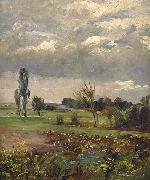 |
George Mosson
|
|
George Mason IV (December 11, 1725 - October 7, 1792) was an American Patriot, statesman and a delegate from Virginia to the U.S. Constitutional Convention. Along with James Madison, he is called the "Father of the Bill of Rights."[1][2][3][4] For these reasons he is considered one of the "Founding Fathers" of the United States.[5][6]
Like anti-federalist Patrick Henry, Mason was a leader of those who pressed for the addition of explicit States rights[7] and individual rights to the U.S. Constitution as a balance to the increased federal powers, and did not sign the document in part because it lacked such a statement. His efforts eventually succeeded in convincing the Federalists to add the first ten amendments of the Constitution. These amendments, collectively known as the Bill of Rights, were based on the earlier Virginia Declaration of Rights, which Mason had drafted in 1776.
On the nagging issue of slavery, Mason walked a fine line. Although a slaveholder himself, he found slavery repugnant for a variety of reasons. He wanted to ban further importation of slaves from Africa and prevent slavery from spreading to more states. However, he did not want the new federal government to attempt to ban slavery where it already existed, because he anticipated that such an act would be difficult and controversial.
|
|
|
|
|
|
|
|
|
|
|
|
|
|









